There has been much talk lately of Parliament morphing into a so called ‘zombie Parliament’, devoid of legislative impetus and lacking in fresh law-making ideas. As we have argued before, there is much more a Parliament could and should usefully do than simply add to the statute book in order to be seen to be alive and kicking. But what does the data show?
Our analysis is based on data from services.parliament.uk/bills. We looked at Government bills that received Royal Assent in parliamentary sessions 2005-06 to 2013-14, excluding private bills, hybrid bills and private members’ bills. We cross-referenced with House of Commons Sessional Returns – for the most recent session we also checked against a written statement from the Leader of the House of Commons. A similar number of Government Bills were passed in 2013-14 as in 2012-13 Given that the 2010-2012 session was around twice as long as subsequent sessions, the number of Government bills passed in each session has been largely stable since 2010. A total of 42 public Government bills gained Royal Assent in 2010-12, compared to 28 in 2012-13 and 25 in 2013-14. 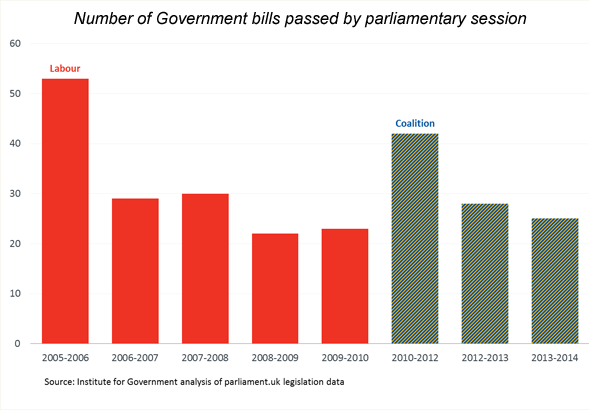
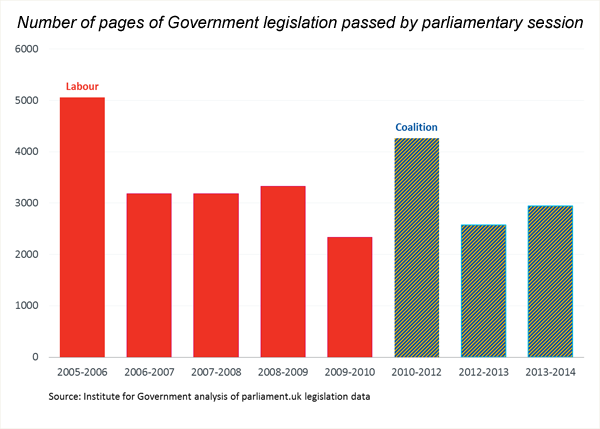
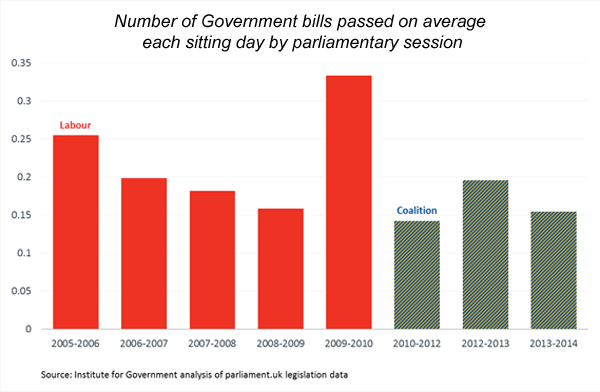
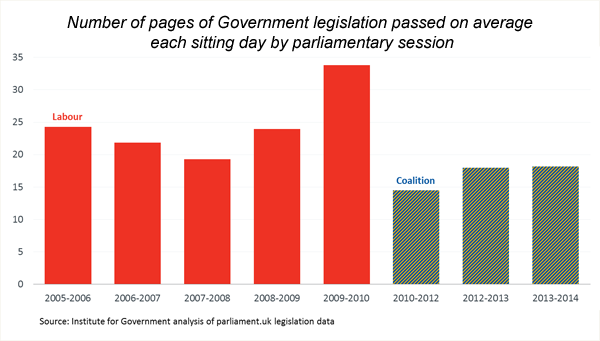
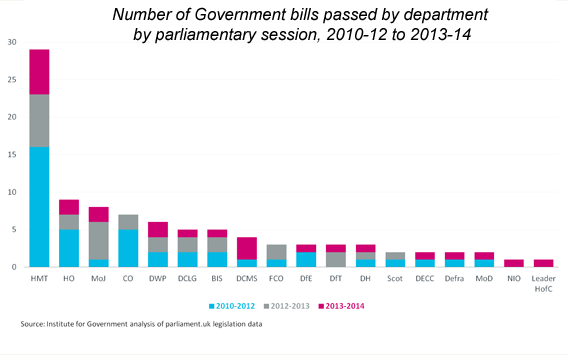
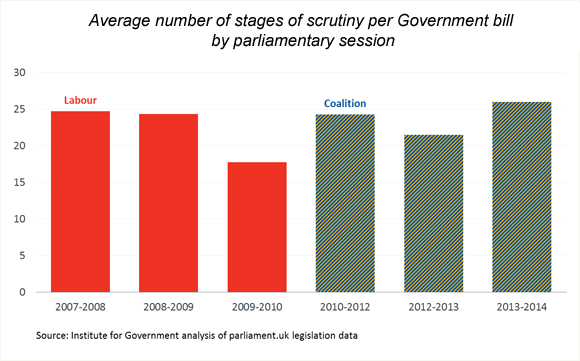
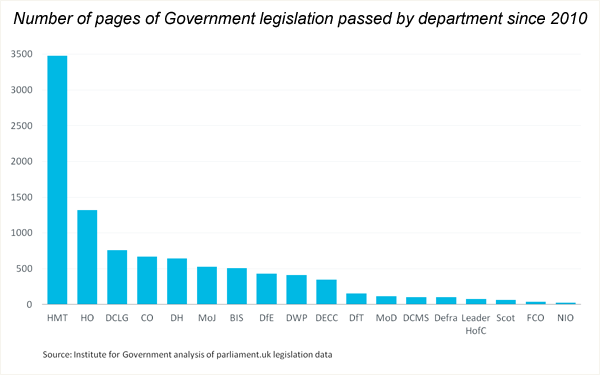
- Administration
- Cameron-Clegg coalition government
- Legislature
- House of Commons
- Publisher
- Institute for Government